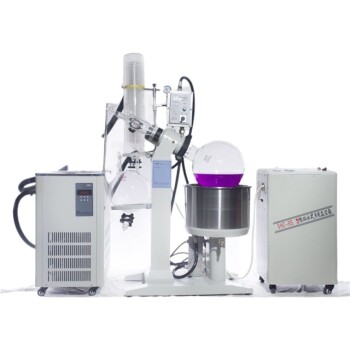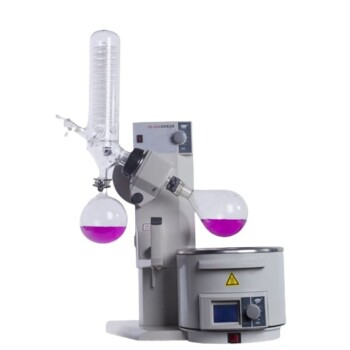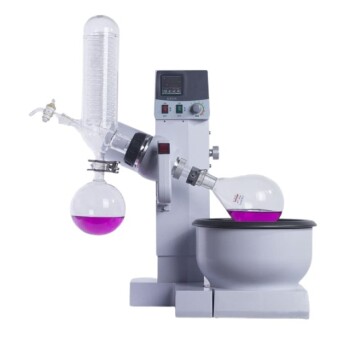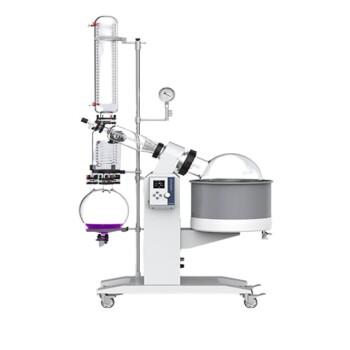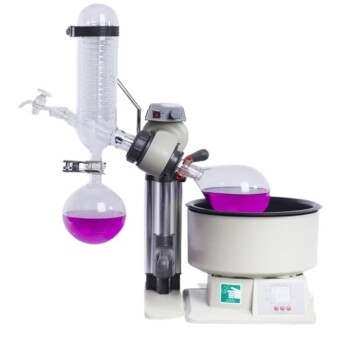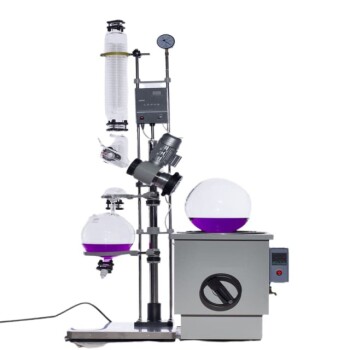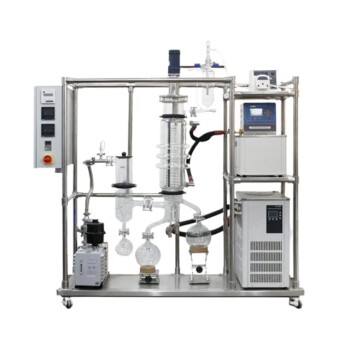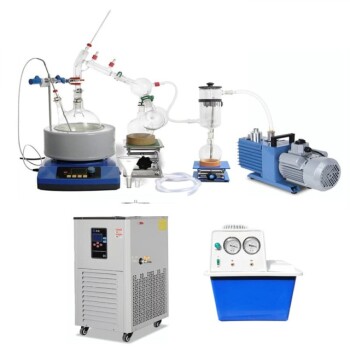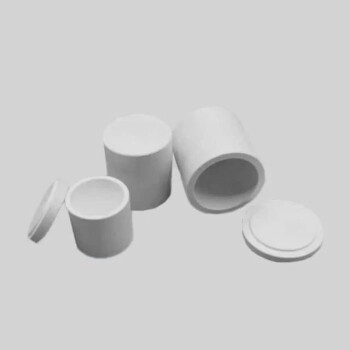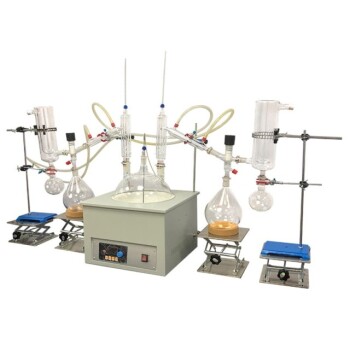Rotary evaporation is an efficient method for evaporating solvents due to its unique design and operational principles. By combining reduced pressure, controlled heating, and continuous rotation, it maximizes the surface area of the solvent, accelerates evaporation, and minimizes the risk of thermal degradation. This method is faster, energy-efficient, and safer compared to traditional boiling techniques. Additionally, it prevents issues like bumping or flash boiling, making it ideal for sensitive materials such as biological products. Its compact structure, ease of use, and ability to recover solvents further enhance its efficiency, making it a preferred choice in laboratories and industrial settings.
Key Points Explained:

-
Increased Surface Area for Evaporation:
- Rotary evaporation involves rotating a flask containing the solvent, which spreads the liquid into a thin film along the inner surface of the flask. This significantly increases the surface area exposed to heat and vacuum, accelerating the evaporation process.
- The thin film formation also helps prevent bumping (sudden bursts of boiling) and ensures uniform evaporation, reducing the risk of sample loss or contamination.
-
Reduced Pressure Enhances Efficiency:
- By operating under reduced pressure, the boiling point of the solvent is lowered. This allows solvents to evaporate at lower temperatures, reducing the risk of thermal degradation, especially for heat-sensitive materials like biological products.
- Lower pressure also minimizes energy consumption, making the process more energy-efficient compared to traditional boiling methods.
-
Controlled Heating and Rotation:
- The flask is heated thermostatically, ensuring precise temperature control. This prevents overheating and maintains optimal conditions for evaporation.
- Continuous rotation ensures even heat distribution and prevents localized overheating, further protecting sensitive materials.
-
Rapid Cooling and Solvent Recovery:
- The solvent vapor is rapidly cooled by a high-efficiency glass condenser, converting it back into liquid form for collection. This not only speeds up the evaporation process but also allows for solvent recovery, which is both cost-effective and environmentally friendly.
-
Prevention of Bumping and Flash Boiling:
- The gentle rotation and thin film formation reduce the likelihood of bumping or flash boiling, which can occur in traditional boiling methods. This ensures a smoother and safer evaporation process.
-
Energy Efficiency and Time Savings:
- Rotary evaporation is significantly faster than traditional methods. For example, it can reduce the time required to eliminate ether from several hours to approximately 20 minutes.
- The combination of reduced pressure, increased surface area, and efficient cooling minimizes energy consumption, making it a cost-effective solution.
-
Versatility and Suitability for Sensitive Materials:
- Rotary evaporators are ideal for concentrating, crystallizing, drying, separating, and recovering solvents in various fields, including pharmaceuticals, chemistry, and biotechnology.
- Their ability to operate at lower temperatures makes them particularly suitable for heat-sensitive materials, such as biological products, without compromising their integrity.
-
Compact Design and Ease of Use:
- Modern rotary evaporators are designed with compact structures, improved leakproofness, and user-friendly features. These enhancements make them easy to operate, observe, and maintain, further contributing to their efficiency.
-
Environmental and Economic Benefits:
- Solvent recovery reduces waste and lowers costs, making rotary evaporation an environmentally sustainable option.
- The energy-efficient operation and reduced processing time translate to significant cost savings in both laboratory and industrial settings.
In summary, rotary evaporation stands out as an efficient method due to its ability to combine reduced pressure, increased surface area, controlled heating, and rapid cooling. These features make it faster, safer, and more energy-efficient than traditional methods, while also being versatile and suitable for sensitive materials. Its compact design and environmental benefits further enhance its appeal, making it a preferred choice for solvent evaporation in various applications.
Summary Table:
| Feature | Benefit |
|---|---|
| Increased Surface Area | Accelerates evaporation and prevents bumping or sample loss. |
| Reduced Pressure | Lowers boiling points, reduces thermal degradation, and saves energy. |
| Controlled Heating & Rotation | Ensures precise temperature control and even heat distribution. |
| Rapid Cooling & Solvent Recovery | Speeds up evaporation and allows cost-effective, eco-friendly solvent recovery. |
| Prevention of Bumping | Ensures a smoother and safer evaporation process. |
| Energy Efficiency | Reduces processing time and energy consumption. |
| Versatility | Ideal for sensitive materials and various applications. |
| Compact Design | Easy to use, observe, and maintain. |
| Environmental Benefits | Reduces waste and lowers costs through solvent recovery. |
Ready to enhance your lab's efficiency with rotary evaporation? Contact us today to learn more!
